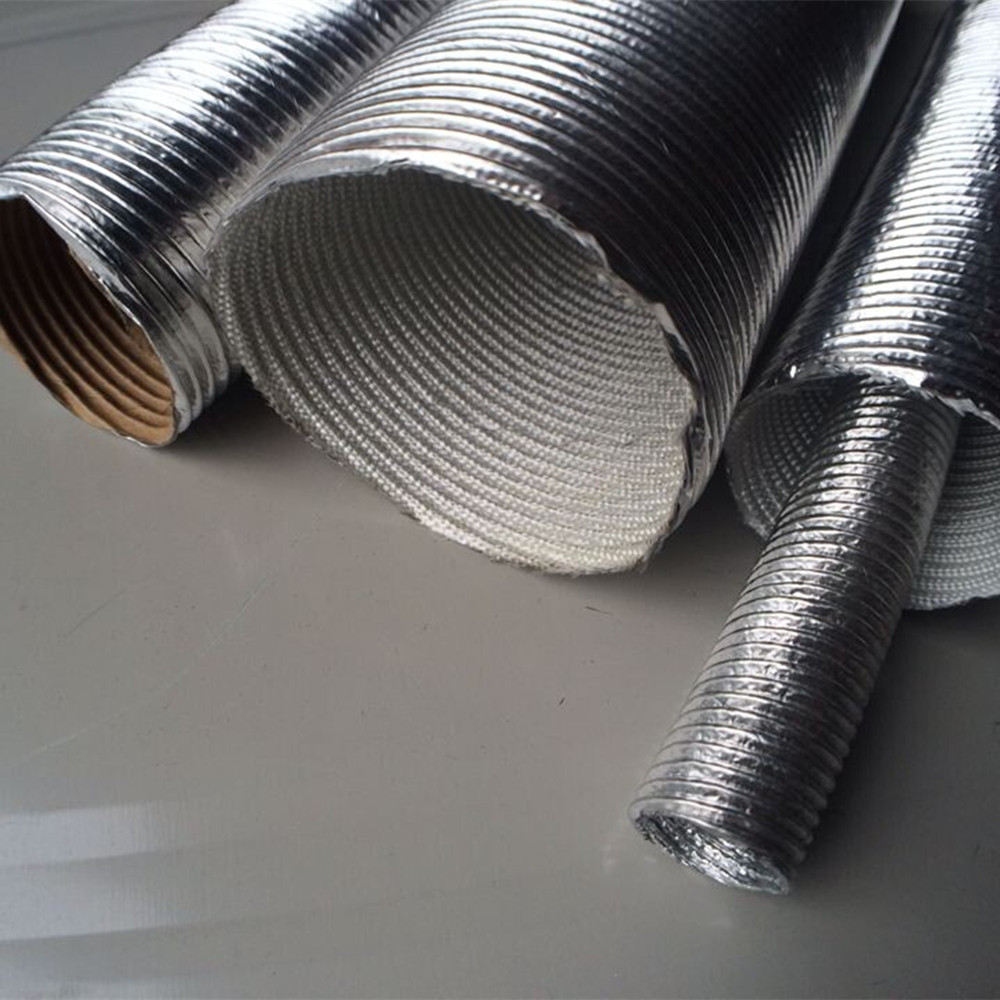Co to jest aluminiowa rura falista odbijająca ciepło i do czego służy?
Jan 13, 2025
Aluminiowa rura karbowana odbijająca ciepło to elastyczna, trwała rura wykonana z połączenia aluminium i materiału żaroodpornego, zwykle zaprojektowana w celu odbijania wysokich temperatur i izolowania ich. Falista konstrukcja zwiększa jej elastyczność, umożliwiając jej łatwe rozszerzanie i kurczenie się, a warstwa aluminium zapewnia doskonałe właściwości odbijania ciepła.
Kluczowe funkcje:
-
Odbicie ciepła: Warstwa aluminium odbija ciepło od wrażliwych kabli, przewodów i węży, chroniąc je przed nadmierną temperaturą.
-
Elastyczność: Falista struktura zapewnia dużą elastyczność, dzięki czemu można ją łatwo zainstalować w ciasnych przestrzeniach lub wokół zakrzywionych elementów.
-
Trwałość: Często jest odporny na trudne warunki, w tym narażenie na oleje, paliwa, chemikalia i ścieranie.
-
Lekkość: Aluminium to lekki materiał, dzięki czemu rura nie dodaje niepotrzebnego ciężaru do systemu.
Typowe zastosowania:
-
Przemysł motoryzacyjny:
-
Ochrona pod maską: Służy do ochrony przewodów, kabli i węży przed ekstremalnymi temperaturami w pobliżu elementów silnika. Pomaga zapobiegać uszkodzeniom cieplnym i awariom elektrycznym.
-
Przemysł morski:
-
Ochrona kabli i węży: Stosowana na łodziach i statkach do ochrony najważniejszych systemów przed ciepłem wytwarzanym przez silniki lub układy wydechowe.
-
Sprzęt przemysłowy:
-
Izolacja rur i węży: Jest powszechnie stosowana w przemysłowych systemach rurowych, które wymagają ochrony przed wysokimi temperaturami, pomagając zachować wydajność i trwałość.
-
Przemysł lotniczy:
-
Izolacja cieplna przewodów i komponentów: W zastosowaniach lotniczych i kosmicznych może pomóc chronić delikatne przewody i układy przed wysokimi temperaturami w pobliżu silników lub układów wydechowych.
-
Systemy HVAC:
-
Izolacja kanałów powietrznych: Można ją również stosować w systemach kanałów powietrznych w celu izolacji przed utratą ciepła lub zapobiegania wpływowi ciepła zewnętrznego na przepływ powietrza.
Krótko mówiąc, aluminiowe rury karbowane odbijające ciepło są stosowane głównie w środowiskach, w których odporność na ciepło ma kluczowe znaczenie, zapewniając izolację, ochronę przed działaniem ciepła oraz trwałość i wydajność wrażliwych komponentów.

